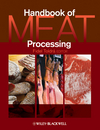Microwaveable packaging helps drive growth
Meat-based meals gain popularity at breakfast.

Microwave ovens have enjoyed favored status in virtually every kitchen for decades. Despite the appliance’s longevity, the demand for microwavable products shows no signs of plateauing or slowing. In fact, the U.S. microwavable food market is expected to experience a 5.4% compound annual growth rate (CAGR) to expand from $31 billion in 2021 to $43 billion in 2027, according to a report from Research and Markets. (1)
This is largely due to the convenience factor heat-and-eat meals, entrees, and side dishes bring to the table. A survey by Bob Evans Farms Inc. shows this is especially true at breakfast because Americans place a high priority on eating breakfast during the workweek, yet nearly two-thirds of those surveyed (63%) would rather sleep longer than wake up in time to cook and eat the first meal of the day. Other barriers to eating breakfast include the time/energy needed for prepping and cooking (40%), deciding what to make (39%), and managing cleanup (38%).
“Our survey findings have confirmed that while eating breakfast is a priority for the majority of American consumers, many of these same consumers view breakfast as a daily chore,” said Maia Daly, senior marketing manager for Bob Evans Farms.
She added, “The connotations toward the process of cooking breakfast are overwhelmingly negative in the minds of working Americans.” To eliminate that barrier to breakfast, Bob Evans Farms offers an array of refrigerated heat-and-eat breakfast items. This provides consumers “with meal solutions they need to maintain their busy schedules, all while building a convenient, delicious, and nutritious foundation for their day,” Daly said.
The appeal of refrigerated heat-and-eat options is clear. Roughly three-quarters of survey respondents reported that they purchase refrigerated heat-and-eat breakfast items at least once a month to make breakfast prep easier. Additionally, 41% are more interested in refrigerated heat-and-eat breakfast items than they were before the 2020 global pandemic. Convenience, taste, and price are the top reasons cited for purchasing refrigerated heat-and-eat breakfast items
Lunch and dinner also are seeing an expanded array of heat-and-eat meals, main courses, and sides. The global ready meals market is registering a CAGR of nearly 12% per year, according to a report from Allied Market Research. (2) New products are appearing in both freezer and refrigerated cases in an array of packaging, including trays, cups, pouches, bowls, and cartons.

Bowls are particularly popular, especially for single-serving portions. Conagra Brands has chosen a bowl for several recent product introductions including:
- P.F. Chang's Home Menu Beef & Broccoli, Chicken Teriyaki, Chicken Lo Mein, and Chicken Fried Rice meals
- Frontera Chicken Fajita, Carne Asada Burrito, Chicken Verde Burrito, and Pork Carnitas Burrito meals
- and Banquet MEGA Bacon Mac & Cheese.
Bowls also are the packaging format selected by Sweet Earth Foods for its new frozen Korean BBQ-Style Chik'n and Cacio e Pepe entrées.
Meanwhile, packaging for retail products as well as dine-in and take-out applications is shifting to more sustainable options such as fiber-based bowls, trays, and cartons. Although the renewable fiber typically is sourced from wood, sugarcane also may play a role. In some cases, these fiber-based structures can be qualified as compostable and are dual-ovenable to accommodate either microwave or conventional oven heating.
Whatever the base material, efforts continue to reduce plastic use. Sometimes, this reduction is achieved by lightweighting, as Tyson Foods Inc. did when it replaced a three-component package (rigid amorphous polyethylene terephthalate tray, polyvinyl chloride overwrap, and label) with a recyclable, high-barrier pouch for its Tyson Instant Pot Kits. The winner of a Gold Award for Expanding the Use of Flexible Packaging in the 2022 Flexible Packaging Achievement Awards Competition, the pouch represents an 80% reduction in carbon footprint and a 75% reduction in packaging weight. It also eliminates chloride-based materials.
However, when plastic is necessary, biodegradable resins can sometimes serve as an alternative to traditional resins, and mono-material films are replacing more complex structures that are less likely to be recycled. A growing number of suppliers offer food-grade plastic packaging with post-consumer-recycled content.
1 Research and Markets, “Microwavable Food Market Research Report by Product (Frozen Food and Shelf Stable Microwavable Food), Packaging Technology, State - United States Forecast to 2027 - Cumulative Impact of COVID-19,” Report, April 2022.
2 Allied Market Research, “Global Ready Meals Market, Opportunities and Forecasts, 2022-2031,” Report, February 2022.
Looking for a reprint of this article?
From high-res PDFs to custom plaques, order your copy today!







